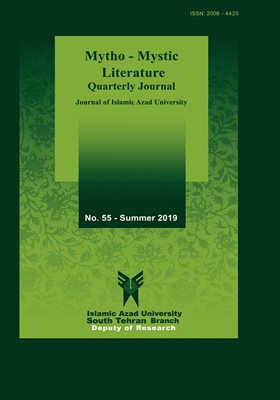-
-
List of Articles
-
Open Access Article
1 - A Critical Review of René Girard’s Mythology Theory
Masood Algooneh Junqani -
Open Access Article
2 - The Mystical Poems of Abd al-Wahhab Al-Bayati and Sohrab Sepehri: A Comparative Study
Hosain Etemādi Nāheda Fawzi Mehrdād Āghāee -
Open Access Article
3 - The Word Association between Shams and the Words of Aftab and Khorshid in Divan Shams
Rahmān Barzgar Bahman Nozhat Fātemeh Modarresi -
Open Access Article
4 - The Myth of Blood and Its Ritual Functions in the Stories of Shāhnāmeh
Hasan Heidary Mozhgān Sādeghpour Mobārakeh -
Open Access Article
5 - Elephant and Its Ritual and Mythological-Epic Motifs in Iranian Epic Literature
Maryam Rezāii Avval Ebrāhim Estāji -
Open Access Article
6 - Archetypal Analysis of the Seven Labors of Rostam (Haft Khan-e Rostam); Based on Jung's Psychological Theory
Akbar Shāmloo Ebrāhim Vāsheghāni Farāhāni Rāmin Khodākarami -
Open Access Article
7 - Metamorphosis of Myths in Poems of Badr Shakir al-Sayyab
masoomeh mahdavi Seid Babak Farzāneh Leilā Ghāsemi Hāji Ābādi -
Open Access Article
8 - Recognizing the Behaviors of the Sālek in Musibat-Nāmeh of Attār; Based on Max Lüscher's Psychology of Colors
Fereshteh Nāsseri -
Open Access Article
9 - The Origin of the Dreams of Saints of God in Tazkirat-al-Auliyā
Isā Najafi Qodratollāh Alireāzee -
Open Access Article
10 - The Mystical Attitude of Ahmad Ghazali and Transformation of Pure Love of Layla and Majnun
Soheilā Namāz Alizādeh Asharf-o-Sādat Mousavilar
-
The rights to this website are owned by the Raimag Press Management System.
Copyright © 2021-2025







